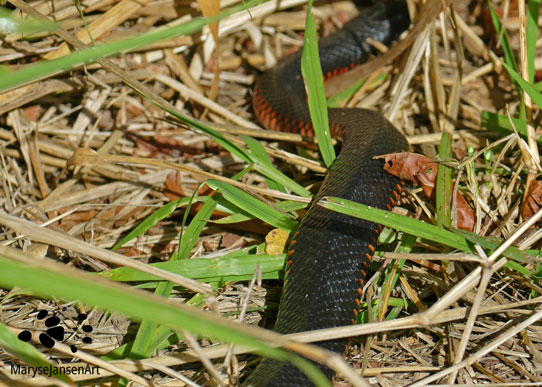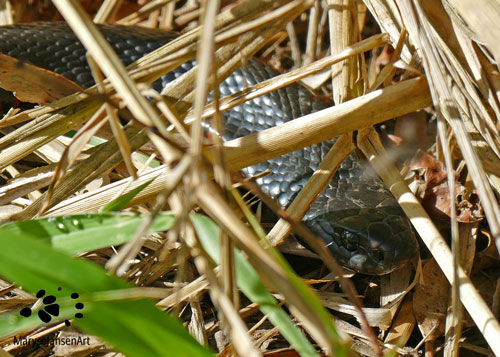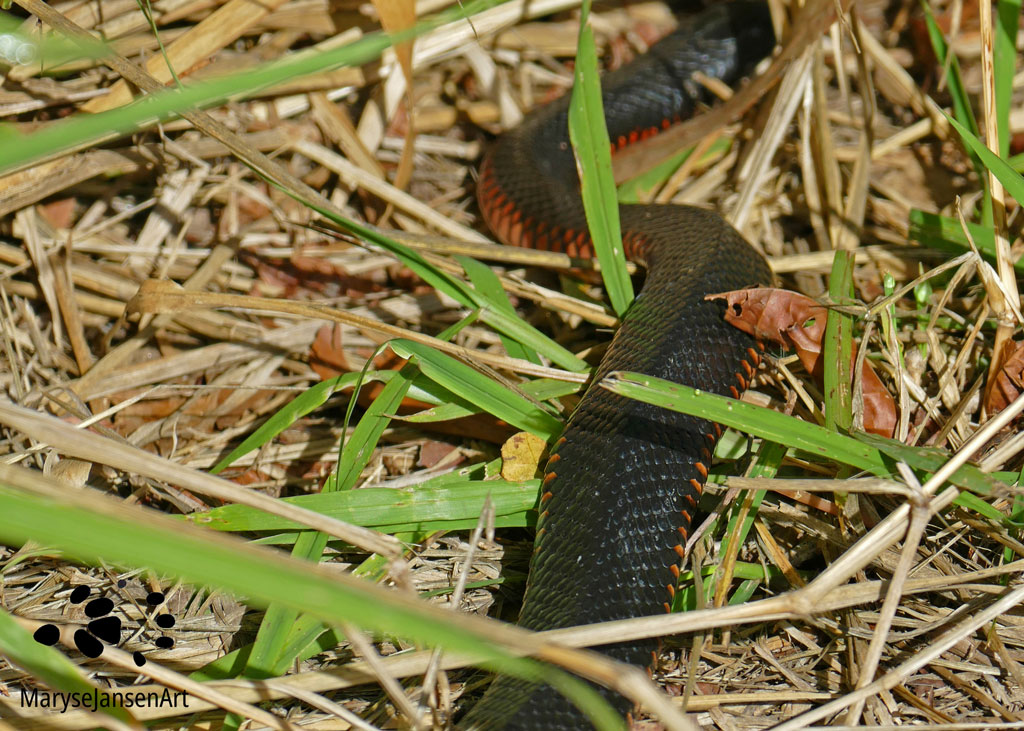Wildlife Photography with marysejansenart
Photographing dangerous subjects – part 2

‘Snake!’ When I hear someone call out ‘snake!’ or if I’m the one to do it myself, I always feel some excitement. A quick assessment of the situation needs to be made! What do I have to do to stay safe? Do I have to back off quickly or freeze? And then … if I decide it’s safe enough to relax, I get interested: can I see what type of snake it is? I study its behaviour for a little while from a safe distance and start wondering if it possible to take a photo.
Table of Contents
Fear of snakes
Snakes are a cause of a deep rooted fear in humans. I did some internet research about what things people fear the most. Almost in every list I found that snakes are high in the top 10 of most feared things! When you think about it it’s quite interesting because a lot of people (possibly even most people) in the world will never have encountered a wild snake in their lives!
I certainly had not, living in the Netherlands. The only time I thought I saw one, it turned out to be a “Hazelworm”, which is a legless lizard! Neither had I seen any snakes during my travels through various countries in Europe, Africa and South-America. So far, I’d never had a reason to worry about them…
Venomous snakes in Australia
Coming to Australia, that changed! More then 200 species of snakes live in this country! Around 30 of these are sea snakes which leaves a huge number of snakes roaming the land. So chances were high that I would encounter some of them. Since Australia is renowned for having some of the most venomous snakes in the world that sounded a bit scary at least! Looking into it, I learned that just over 100 of the terrestrial species are venomous! Thankfully only a small number out of those are likely to cause death in a human being.
Nevertheless, the risk is real. And other venomous snakes can still cause you a lot of grief even if you don’t die from their bites. So I felt it was time for me to learn a bit more about these creatures so that I could stay safe on my explorations of the Australian nature!
Like I mentioned in my post about Saltwater Crocodiles, it is vitally important to understand the behaviour of the dangerous animals that you encounter in order to stay safe around them! I also find that having this kind of knowledge helps a lot with managing the fear and keeping it realistic.
I found it helpful to learn that snakes are usually quite shy and will go out of a human being’s way if they get the opportunity. They do not perceive us as food so they prefer not to waste their venom on us. They need their venom to be able to catch and eat their prey. The only time that they will bite will be out of defence, when they feel threatened by us or if we are standing in the way of their escape route!
My Red-bellied Black Snake encounter
‘Snake!’ It’s me calling out this time. I’m on a local bush walk here in south-east Queensland. The terrain is hilly and typical bush land with lots of gum trees. In a lower lying area the vegetation changes and becomes much denser and greener. That must mean there is water here. On the side of the path something black and shiny attracts my attention … ‘Snake!’
I can quickly see that it’s a Red-bellied Black Snake. Red-bellies, as they are often referred to, are a beautiful glossy black snake with a distinctive red to cream coloured belly..Their eyes are very dark in colour.
It is not surprising to find it here. Red-bellied Black Snakes feed mainly on frogs, so their favourite habitat is near (shallow) water. They also take small reptiles and mammals.
They can get up to 2m long and are dangerously venomous. The venom may cause muscle damage, nerve damage and stop your blood from clotting. When you think you may have been bitten you need to seek urgent medical attention. No deaths have been confirmed from a bite of this species though.
Taking in this warning, it is also important to note that Red-bellies are naturally shy and will often freeze to avoid confrontation. The risk is thus, that you may not become aware of them until you get really close! When you get too close for their liking the snake will generally try to escape but when it can’t see a way out or when it’s provoked it might attack.
I am getting a little bit close at the moment I spot it, so my instant reaction is to take a few steps back and give it space. I observe from a distance that this snake doesn’t seem to be inclined to make a move, it is probably sunbathing. I feel confident that I can take some photos, while of course maintaining enough distance and ensuring it doesn’t feel threatened by me in any way. Of course, a good zoom lens comes in handy in these situations!

Tips to stay safe around snakes
- Snakes are very sensitive to the vibrations of our approaching steps they feel in the ground. So by the time we get there, chances are they are long gone!
- Always assume the snake is venomous. Snakes are not always easy to identify by their colouring, it can vary a great deal. Better safe then sorry!
- Never approach or attack a snake! It is extremely dangerous because they will feel threatened or cornered and they will strike! Also be aware that snakes are protected and you are not allowed to kill them! It is just as important to keep them safe too!
- Don’t walk in the high grass where you can’t see the snake and you might accidentally step on it. Preferably, stay on the path where you have a clear view!
- When you see a snake, give it space: go back or give it a really wide berth.
- Wear protective clothing: long pants and ankle high hiking boots. Almost all Australian venomous snakes have short fangs, so they won’t be able to bite through this protective clothing! The only exception is the Brown Tree Snake, which is not considered very dangerous (still be careful, because their bites may require medical care).
- Snakes can’t hear so feel free to scream all you want, it won’t attract their attention!
- They do respond to movement so as long as you stand stock still they can’t detect you! And don’t wriggle your finger at them in an attempt to point them out to your companions because they might think it’s a mouse’s tail and bite!
- Snakes are cold-blooded, when they are cold they are quite slow, but when they’ve warmed up they can be lightning fast in their strikes!
If you are interested in purchasing ‘Red-bellied Black Snake’ or would like to see what it looks like on the various products, please head to my shop.
Check out my story about a non-venomous snake: the Carpet Python!


